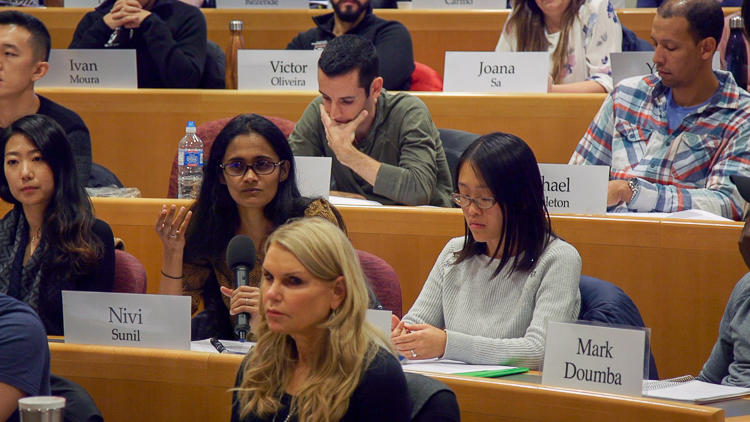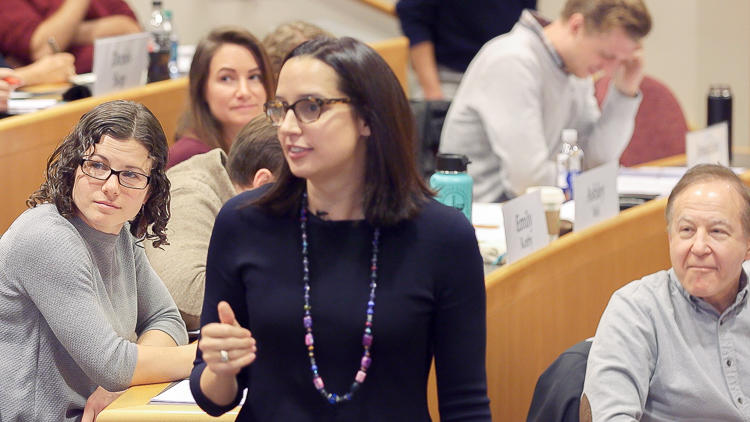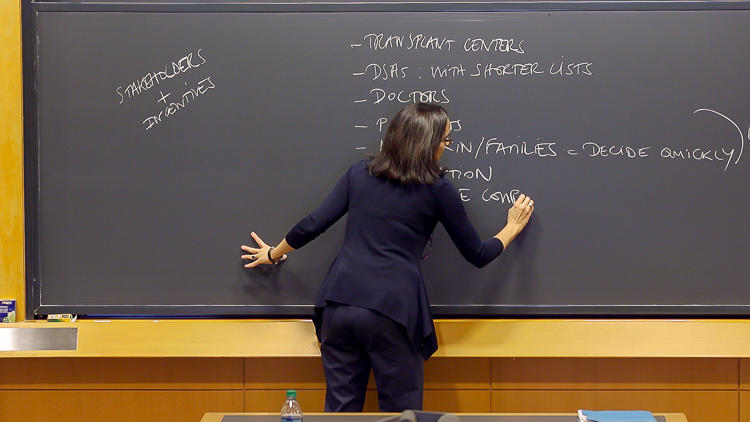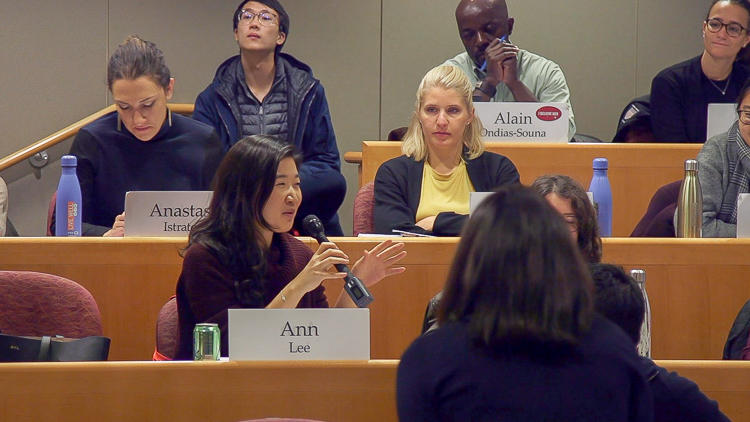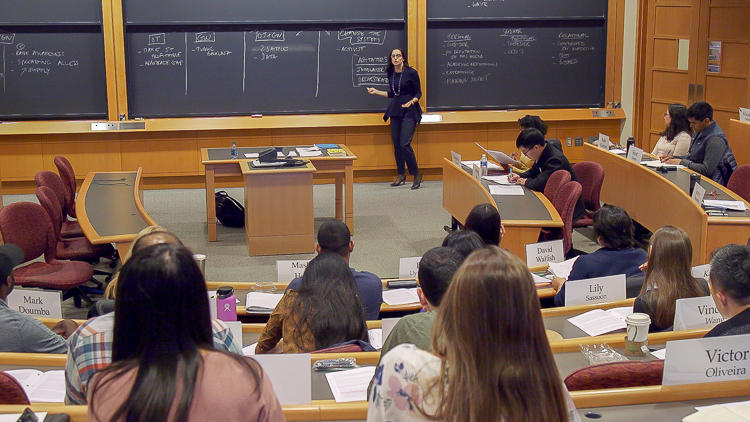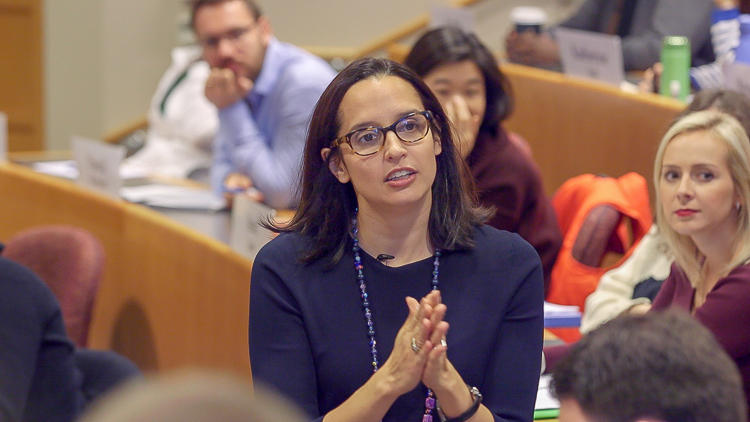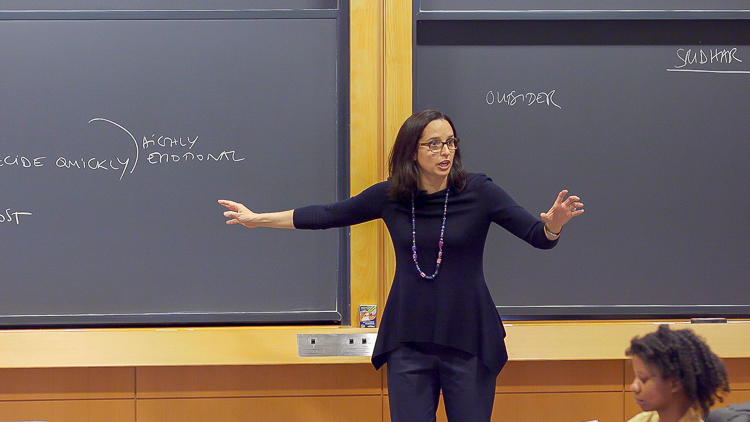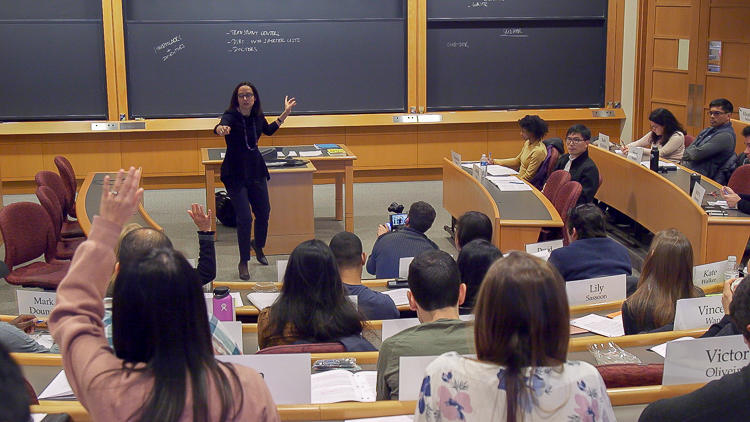The professional real world is complex and filled with uncertainty. Rather than avoiding this complexity, case-based instruction centers around cases that tell the stories of real-life protagonists facing difficult decisions. Cases often end with a straightforward question: Which path should the protagonist take? To answer this question, students carefully read the case and its documents before class. They then spend class time discussing the context, analyzing the data, and debating potential courses of action the protagonist could take. As a facilitator of the conversation, the case instructor tracks and guides the conversation, pushing students to further clarify their ideas, teasing out disagreements, and introducing useful frameworks for analyzing the case. The end of a case discussion usually involves a "reveal," where the actual outcome is shared and students have an opportunity to reflect on their predictions. For these reasons, case-based discussion classrooms are an exciting mix: they are intensely grounded in specifics yet centered around an open-ended question. Effective case teaching instructors prepare intensely for sessions but try to always follow their students’ lead as well.
How do you plan a case-session that will cover the key concepts but is flexible enough to follow a spontaneous conversation? How can instructors effectively follow up with students to ensure their students’ ideas have been clearly articulated and explored? How can student disagreement be harnessed for deeper understanding? How can instructors make sure that all students have an opportunity to be heard in the classroom discussion? In these videos, featured instructor Julie Battilana discusses her approach and strategies for using case teaching with graduate students across the university.


